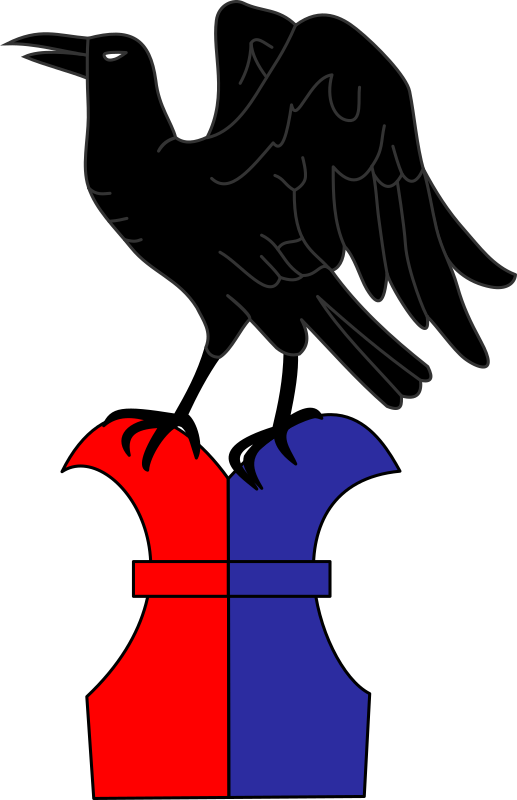by Amanda Martel
In discussions of heraldry in the SCA, there is often a divide placed between two types of herald, and the distinctions tend to end there. There are book heralds, and there are voice heralds. What more could you want?
I’d like to argue that this view is rather limiting. It’s generally acknowledged that there are different types of book heralds, and different types of voice heralds, but by laying the branches of heraldry out there is some benefit to be gained.
One thing to remember is that no herald will be equally skilled and energetic across all branches, and that to count oneself a herald, you only need an interest in but one of them. As an example, while my interests spread across most of these areas to some extent, I specifically avoid duty heraldry because it doesn’t mesh well with my skills and inclinations.
Armoury
One of the main branches of what’s classically book heraldry, armoury is focused on the research and design of armoury (that is to say, coats of arms or devices, badges, and similar visual elements).
Ceremonial Design
Straddling the line of the two classical categories, ceremonial design is a bookish pursuit that supports voice heraldry. Researching and designing ceremonies is mainly focused on things for court heraldry, but there are some interesting possibilities when applying this to field or duty heraldry.
Court Heraldry
The series of skills used in acting as court herald for a Crown or Coronet, from organisation and paperwork, to the voice work during the court itself. Usually considered a type of voice heraldry.
Duty Heraldry
Ranging from a short announcement in a feasting hall to a full announcement round about the Rowany Festival site, duty heraldry makes sure that the populace knows what’s happening at the event.
Field Heraldry
One of the most frequent and most visible parts of voice heraldry, this is the work of the tournament herald who makes the tourney run smoothly, and keeps the audience aware of what’s going on on the field.
Heraldic Administration
Oft forgotten as a branch of heraldry, administration is the handling of paperwork. Other branches of heraldry will generate work for the administrative herald, from the creation of submission forms for names and armoury, to post-event reports, and any number of other bits of work behind the scenes to keep everything working.
Onomastics
Coming from the Greek ónoma (name), onomastics is the study of names, be it names for people, households, groups, awards, or any other thing which might need a period designator. One of the classical branches of book heraldry.
Pageantry
Sometimes considered a field of artisanry adjacent to heraldry rather than a branch of heraldry itself, I maintain that the research and creation of heraldic display is an intrinsic part of the work of heraldry. From banners to shields, the decoration of the world with heraldic endeavours is worthy.
Silent Heraldry
A relatively new branch to heraldry, silent or signed heraldry is still being developed. It is (ironically) under the general heading of voice heraldry, as it’s the art of supplementing spoken heraldry, such as in court, with sign language for greater accessibility.
